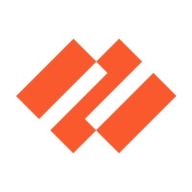

Cortex XDR by Palo Alto Networks and Netsurion compete in the cybersecurity domain, with Cortex XDR taking the upper hand due to its advanced security features and comprehensive endpoint protection.
Features: Cortex XDR offers AI-driven behavior-based detection, seamless firewall integration, and advanced machine learning for endpoint protection. WildFire and robust correlation features enhance threat detection. Netsurion excels with strong SIEM capabilities and managed services but lacks the advanced endpoint security of Cortex XDR.
Room for Improvement: Cortex XDR could improve application control, false positive management, and third-party integration. Users desire a more comprehensive dashboard with lower resource demands. Netsurion needs enhancements in deployment, search functionalities, and real-time alerting, with better integration and real-time analysis capabilities.
Ease of Deployment and Customer Service: Cortex XDR provides versatile deployment options but faces challenges with complex customer service issues. Netsurion offers easier deployment and valuable managed services but can improve real-time communication and rapid solution deployment. Both platforms have user complaints about support efficiency.
Pricing and ROI: Cortex XDR is pricier but delivers strong ROI with advanced security features, reducing breach risks. Netsurion is cost-effective with competitive pricing in its managed services model, offering extensive support and integration, providing meaningful ROI with a budget-friendly approach compared to Cortex XDR's high pricing.
They appreciate the rich telemetry data from the solution, as it provides in-depth threat identification.
I have seen a return on investment with Cortex XDR by Palo Alto Networks, as this product is offered at a minimal cost, and we can find a good ROI from it.
Every vendor has similar support; it depends on how the case is handled and raised.
Their support is efficient and responsive whenever I raise a ticket through my portal.
They did well with handling high-risk threats.
For the last 11 months, we haven't faced any outage issues, so it is a stable product.
Cortex XDR is stable, offering high quality and reliable performance.
All the situations and issues were controlled in a good way by Cortex XDR by Palo Alto Networks.
If the per GB data could be provided at a certain level free of cost or at the same cost which the customer is taking for the entire bundle, that would be better.
The inclusion of this feature would allow the application of DLP policies alongside antivirus policies via a single agent and console, making it more competitive as other OEMs often offer DLP solutions as part of their antivirus products.
Cortex XDR could improve its sales support team, including better commission structures and referral programs.
Compared to competitors such as CrowdStrike and Sophos, the pricing of Cortex XDR by Palo Alto Networks is similar to CrowdStrike but more expensive than Sophos.
Cortex XDR is perceived as expensive by some customers, yet offers dynamic pricing.
It incorporates AI for normal behavior detection, distinguishing unusual operations.
The product provides automation responses in case of a threat attack, severity assessments, centralized manageability, and comprehensive compliance features, resulting in reduced costs.
The way the cases used to collect the data is not intrusive, permitting the infrastructure to collect the data and send it to the Data Lake without problems.
| Product | Market Share (%) |
|---|---|
| Cortex XDR by Palo Alto Networks | 5.4% |
| Netsurion | 0.3% |
| Other | 94.3% |


| Company Size | Count |
|---|---|
| Small Business | 41 |
| Midsize Enterprise | 18 |
| Large Enterprise | 36 |
| Company Size | Count |
|---|---|
| Small Business | 10 |
| Midsize Enterprise | 7 |
| Large Enterprise | 7 |
Cortex XDR by Palo Alto Networks delivers comprehensive endpoint security, integrating well with other systems to offer robust threat detection and real-time protection through AI-driven analytics.
Cortex XDR by Palo Alto Networks offers advanced endpoint protection and threat detection through AI and behavior-based analytics. Its user-friendly design simplifies integration with firewalls, delivering multi-layered protection with low resource consumption. Valued for policy management, USB control, and incident correlation, Cortex XDR enhances threat management and real-time threat hunting capabilities. However, users note challenges with third-party integration, reporting, and dashboard automation. Agent performance across operating systems and memory consumption are areas for improvement, alongside reducing false positives and simplifying endpoint management and setup.
What features does Cortex XDR offer?
What benefits should be considered in reviews?
Cortex XDR is crucial in industries requiring robust endpoint protection, such as finance, healthcare, and technology. It supports malware detection, behavioral analysis, and ransomware mitigation across endpoints, including remote work environments, providing comprehensive threat visibility and security policy management. The solution's integration with firewalls and specialized industry requirements enhances security posture in diverse operational settings.
Netsurion offers a comprehensive solution for centralized log management, SIEM, and managed services, ensuring continuous monitoring and security event analysis for diverse organizations, enhancing IT security and compliance.
Netsurion centralizes event management through SIEM and managed services. Organizations leverage it for vulnerability assessment and intrusion detection, integrating logs from Windows, Linux, and network devices. Its SOC provides 24/7 monitoring, ensuring compliance with PCI and audit standards. Real-time alerts and efficient log data aggregation enhance threat identification and response. Weekly reports and insights into user lockouts contribute to robust security management, beneficial for firms with constrained resources.
What are some key features of Netsurion?Netsurion is implemented across industries like finance, healthcare, and retail, where security is crucial. These sectors require robust monitoring and compliance solutions, utilizing Netsurion's seamless integration with their existing infrastructure to manage security operations effectively, addressing both regulatory needs and threat management.
We monitor all Extended Detection and Response (XDR) reviews to prevent fraudulent reviews and keep review quality high. We do not post reviews by company employees or direct competitors. We validate each review for authenticity via cross-reference with LinkedIn, and personal follow-up with the reviewer when necessary.